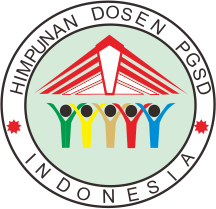DEVELOPMENT OF SOFT SKILL-BASED INTERACTIVE MEDIA ON THEMATIC LEARNING AT ELEMENTARY SCHOOLS
DOI:
https://doi.org/10.30595/dinamika.v16i2.16653Keywords:
interactive media, thematic learning, soft skillAbstract
The purpose of this research is to develop soft skill-based interactive media, to know the quality of soft skill-based interactive media in thematic learning, and to know the level of effectiveness of using soft skills-based interactive media. This study uses the type of research R & D (Research and Development). The stages of developing soft skill-based interactive media are modified into four stages, namely analysis, design, development, and implementation. The interactive media testing developed has met the criteria of being valid, quality and effective. Validity is declared after instrument validation and product validation have been carried out by media experts. Soft skill-based interactive learning media is said to be of very high quality because teacher and student assessments of learning media are in the very quality category. Soft skill-based learning media is said to be effective because it has met the criteria for assessing teacher activity on learning media, which is in the very effective category. It was concluded that the soft skill-based interactive learning media developed had met the categories of validity, quality and effectiveness so that it was feasible to be used and developed not only in public and private elementary schools.
References
[1] Asrul, & Hardianto, E. (2020). Kendala Siswa Dalam Proses Pembelajaran Daring Selama Pandemi Covid-19 Di SMP N Satap 1 Ladongi. Al Asma : Journal of Islamic Education, 2(1), 1.
[2] Alex, K. (2014). Soft Skill Know Yourself And Know The Word. Rajendra Ravindra.
[3] Chamorro-Premuzic, T., Arteche, A., Bremner, A. J., Greven, C., & Furnham, A. (2010). Soft skills in higher education: Importance and improvement ratings as a function of individual differences and academic performance. Educational Psychology. https://doi.org/10.1080/01443410903560278
[4] Fathurrohman, Pupuh & Sutikno, Sobry. 2014. Strategi Belajar Mengajar. Bandung: PT Refika Aditama
[5] Fikri, Hasnul, And Ade Sri Madona. 2018. Pengembangan Media Pembelajaran Berbasis Multimedia Interaktif. Cetakan I. edited by M. P. Hendrizal, S.IP. Yogyakarta: Penerbit Samudra Biru (Anggota IKAPI).
[6] Gafur, Abdul. 2012. Desain Pembelajaran.Yogyakarta: Ombak Dua
[7] Hendriana, H., Rohaeti, E.E., & Sumarmo, U. (2017). Hard Skills dan Soft Skills Matematika Siswa.
Refika Aditama.
[8] Indriana, Dina. 2011. Ragam Alat Bantu Media Pembelajaran. Yogyakarta: Diva Press
[9] Rusman, dkk. 2012. Pembelajaran Berbasis Teknologi Informasi dan Komunikasi. Jakarta: PT RajaGrafindo Persada
[10] Surjono, Herman Dwi. 2017. Multimedia Pembelajaran Interaktif Konsep Dan Pengembangan. Edisi I. edited by Fitriyanti. Yogyakarta: UNY Press.
[11] Sanjaya, Wina. 2012. Media Komunikasi Pembelajaran. Jakarta: Prenadamedia Group
Downloads
Additional Files
Published
How to Cite
Issue
Section
License
Authors who publish with this journal agree to the following terms:
Authors retain copyright and grant the journal right of first publication with the work simultaneously licensed under a Creative Commons Attribution License that allows others to share the work with an acknowledgement of the work's authorship and initial publication in this journal.
Authors are able to enter into separate, additional contractual arrangements for the non-exclusive distribution of the journal's published version of the work (e.g., post it to an institutional repository or publish it in a book), with an acknowledgement of its initial publication in this journal.
Authors are permitted and encouraged to post their work online (e.g., in institutional repositories or on their website) prior to and during the submission process, as it can lead to productive exchanges, as well as earlier and greater citation of published work (See The Effect of Open Access).

Dinamika Jurnal Ilmiah Pendidikan Dasar is licensed under a Creative Commons Attribution 4.0 International License.













